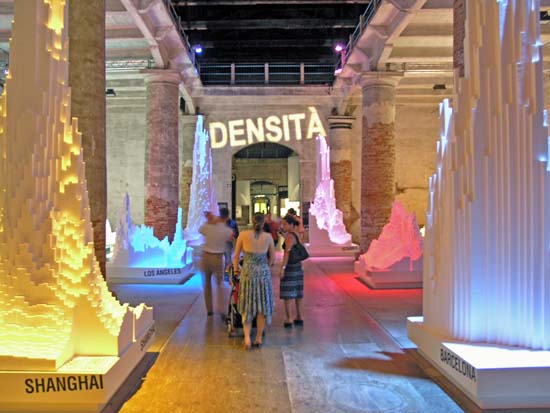All Eyes
Imagine Jane Jacobs in the late 1950s, early 1960s, pleading the case for Boston’s Little Italy — or perhaps New York’s Lower East Side — with The American Look (subtitled: “A Tribute to the Men and Women, Who Design”) from the year 1958 arrayed against her.
Arrayed? What am I saying? That presupposes an arrangement. It seems to me that this uncanny video captures an atmosphere, which, as everyone knows, can hardly be arranged — except ever so subtly. For anyone with even a marginal interest in design or the Cold War, plus 28 minutes to spare, this video is an absolute must-see. Recall, after all, that a mere 6 years later, in 1964, Alan Solomon sent Robert Rauschenberg to the Venice Biennale and Time Magazine could triumphantly announce Goodbye Paris, Hello New York, consolidating the US’s ascent to the style throne formerly occupied unchallenged by those charming Parisians.
I also found the video especially striking because earlier this month I had gone to UVic’s Maltwood Gallery to see an exhibition on Victoria architect John di Castri. His work (which is from the same era so optimistically announced in The American Look — and let’s not forget that he studied architecture in an American suburban university setting) hits, in its small way, the same register implied in the video’s “search for the holy grail,” which (spoiler alert!!) is of course …a car. It’s the kind of architecture that resists translation into urban contexts. It’s meant for a suburban life that the poor can’t afford, while today’s rich no longer want it. What the well-off want now certainly doesn’t seem to be summed up by di Castri’s stripped-down, defiantly sixties 1-bathroom homes on 1/4 acre lots (quelle luxe!, so much land wasted on so few amenities!), but rather a house that suggests Living in the Past (with all the mod cons): in other words, a traditional-looking house, preferably in a context a bit less suburbany isolationist than what the elegant sprawl of “The American Look” requires.
One wonders (one does, doesn’t one?) whether this has something to do with rejecting the insularity of a suburban-derived aesthetic, as embodied in The American Look. I know that sounds illogical and counter-intuitive, but think about it: that late 50s, Cold War-optimism-inspired modernity absolutely bristled with an Ayn Randian individualism (never mind how slavishly one had to obey the rule of gadgets therein!), whereas the oh-so-bourgeois and allegedly loathsome “traditionalism” of some sort of neo-Georgian townhouse also in turn conjures a sense of urbanity and civilised connectedness to the larger public space excised by all that pristine, disembodied, and aerodynamic style.
We want something denser for our eyes than the clean “superman” lines of design mid-20th century design heroes — and yes, except for choosing colours and fabrics, the designers were of course all men. But we don’t want quite the real thing, perhaps. We’ll take a model, as this photo from the 2006 Venice Biennale on architecture shows. Density is so much more amusing, when cut down to scale…

No Comments yet
Sorry, the comment form is closed at this time.